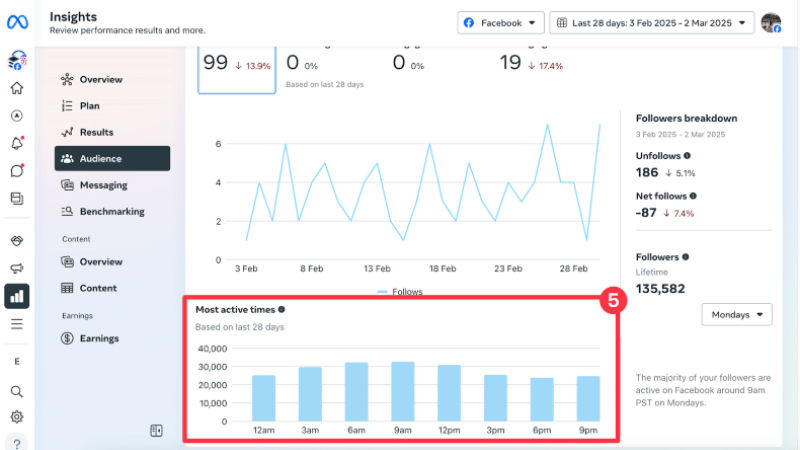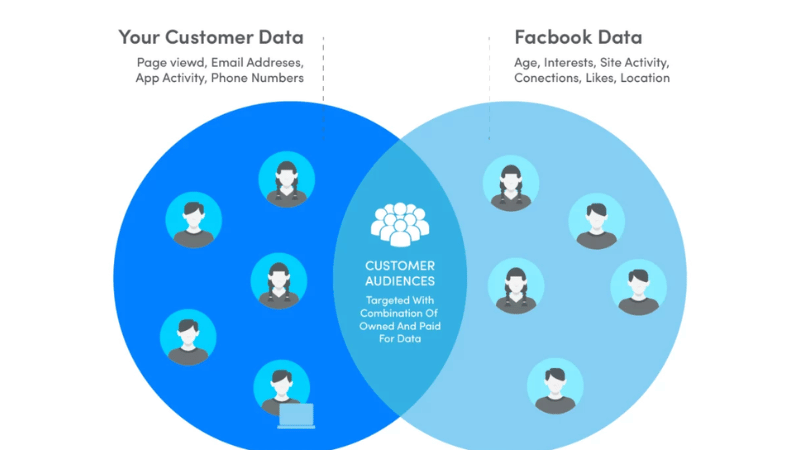Knowing the best time to run Facebook ads is not just about writing a great caption or choosing beautiful images; it also lies in selecting the right prime time. Many businesses invest large budgets but achieve low efficiency, simply because the ad appears at the wrong time when viewers are not online. To run the best time to run Facebook ads, you must clearly understand user behavior, know when they engage most strongly, and how Facebook distributes ad impressions across different time slots. Let’s explore how to optimize timing so that every dollar spent on advertising yields a worthwhile return.
Timing – The decisive factor for Facebook ad effectiveness

Investing a lot of money does not guarantee high ad performance. A campaign is only truly effective when it is deployed at the precise moment users are most active. Timing is the key point that helps Facebook ads increase visibility, boost engagement rates, and optimize the budget.
Running at the right time helps the Facebook algorithm identify the customer file more quickly, whereas running Facebook ads at the wrong time leads to poor ad delivery, wasting costs with disappointing results.
Why choosing the wrong time slot can reduce ad engagement
When you choose a display time that does not coincide with when users are online, the ad loses the opportunity to appear in a prominent position. Facebook prioritizes content distribution based on the viewer’s activity frequency, so if posted during low-traffic periods, the ad will quickly be lost in the news feed.
The consequence is a sharp drop in reach, with click-through and engagement rates falling accordingly. Many businesses still maintain the habit of running $24$ hours a day without monitoring data, leading to a fragmented budget and diluted effectiveness.
The connection between display timing and Facebook user behavior
Facebook users generally have the habit of browsing the network at certain times. They quickly check the news in the morning, entertain themselves during lunch breaks, and the evening is when they spend the most time interacting. Understanding this behavior helps advertisers accurately determine the appropriate running time for each customer segment.
Appearing precisely when users are in the mindset to interact will help the ad achieve higher performance, simultaneously increasing brand recall.
Environmental factors affecting click-throughs
Facebook ad performance does not only depend on the time of day but is also affected by environmental factors. Weekends, holidays, or bad weather all influence the frequency with which users go online. For example, when it rains or users stay home more, engagement usually increases.
Conversely, during vacations or travel seasons, ads may see a drop in click-throughs even if the content remains appealing. Grasping these fluctuations helps you flexibly adjust the running time, ensuring the ad always achieves the best results.
How to determine the prime time for each customer segment
Ads do not yield the same effectiveness every time they appear. To increase visibility and engagement, finding the prime time for each customer segment on Facebook is a crucial step that determines the performance of the entire campaign. Each user file has different online habits, so if the time is correctly identified, the ad will easily reach the right potential audience and generate a higher conversion rate. When starting to optimize timing, focus on analyzing actual behavior rather than relying on intuition.

Analyzing user behavior based on age, region, and device
Each age group has different active hours on Facebook. Young people are often online more in the evening, while the middle-aged group engages strongly during the lunch break or early morning. The regional factor also significantly impacts the results because time zones and daily routines differ between areas.
Additionally, whether users access Facebook via mobile phone or computer will determine the type of content they are most likely to interact with. When you clearly understand these characteristics, it will be easier to set the schedule for the best time to run Facebook ads.
Reading insights to identify when customers are most online
After identifying the customer segment, the next step is to read the insights from the Ads Manager. This data shows when traffic volume peaks, the times when they interact strongly, and the rate of clicking on the ad.
The analysis charts help you clearly identify peak hours during the day or the days of the week with the most stable traffic. Regularly monitoring insights helps avoid running ads during low-viewership hours, reducing budget waste and increasing organic visibility.
Monitoring conversion rate across different time slots
Not just views or interactions, the conversion rate is the true measure of effectiveness. Observe at what times users tend to take actions such as clicking to purchase, signing up, or sending a message.
If you discover a time slot with a conversion rate higher than the average, you should prioritize allocating more budget to that slot. This helps maximize profit without increasing the total advertising cost.
How to A/B test to verify the actual running efficiency
To accurately determine the prime time, you should conduct A/B testing. Create two ad groups identical in content, differing only in their display time. Compare the results between the two groups to see which time yields higher interaction and conversion volume.
After a few testing rounds, you will have the actual data to select the optimal running time. Continuous testing not only helps maintain ad effectiveness but also updates you on user behavior trends that change over different periods.
Smart budget allocation based on high-activity hours

Allocating the budget at the right time is the key factor that helps Facebook ads achieve the highest effectiveness. Many advertisers often focus on content, visuals, or the customer file, forgetting that display time also directly affects cost and results.
When the right high-activity time slots are chosen, the ad not only displays more but also reaches the exact group of users who are in need, thereby optimizing the conversion rate without needing to increase the overall budget. To maximize expenditure, adjusting the budget allocation by hour is a crucial step you should not overlook.
Concentrate the budget during peak hours to increase each
To increase efficiency, prioritize channeling the majority of the budget into the time slots with the highest interaction volume during the day. Instead of turning on the ad all day, let it run strongly during the period when users are most active.
A small tip is to run the best time to run Facebook ads 30 to 60 minutes earlier than the prime time, so the system has time to stabilize and distribute more smoothly. If you are running a conversion ad, this “warm-up” helps Facebook learn faster and display more accurately to the potential customer group.
According to statistical data, the time slot from 8:30 AM to 7:00 PM often yields the highest interaction and purchase rates. This is when users tend to search for products or make purchasing decisions, while the evening is primarily spent on entertainment or light content consumption.
Reduce spending to avoid impression waste
Ads do not always need heavy spending. During off-peak hours, when users are less active or interaction decreases, continuing to maintain a high budget only increases cost while reducing efficiency.
Observe the performance chart to determine the time slots with a high impression rate but low click volume; that is the moment to temporarily reduce spending. Temporarily pausing or reducing the budget during periods of low online traffic helps the distribution system balance better, while saving cost for reinvestment during the prime hours.
Use previous performance data to adjust the budget
Every campaign leaves valuable data about user behavior. Leverage this information to adjust the budget based on reality instead of intuition. Track metrics like reach, click-through rate, and conversion rate by time slot to identify clearer behavioral patterns.
After a few running cycles, you will know when the ad performs strongest and which time slots should have restricted spending. Adjusting the budget based on data not only saves cost but also maintains the campaign’s sustainable effectiveness, ensuring the ad is always distributed to the right person, at the right time, and yields the highest profit.
Frequently Asked Questions
Prioritize the time slot with a stable conversion rate over multiple days, as the Facebook system values consistency over short-term fluctuations.
No, you should not. When the frequency exceeds 3–4 times/person/day, increasing the budget only causes the ad to repeat, reducing the CTR and increasing the cost per result.